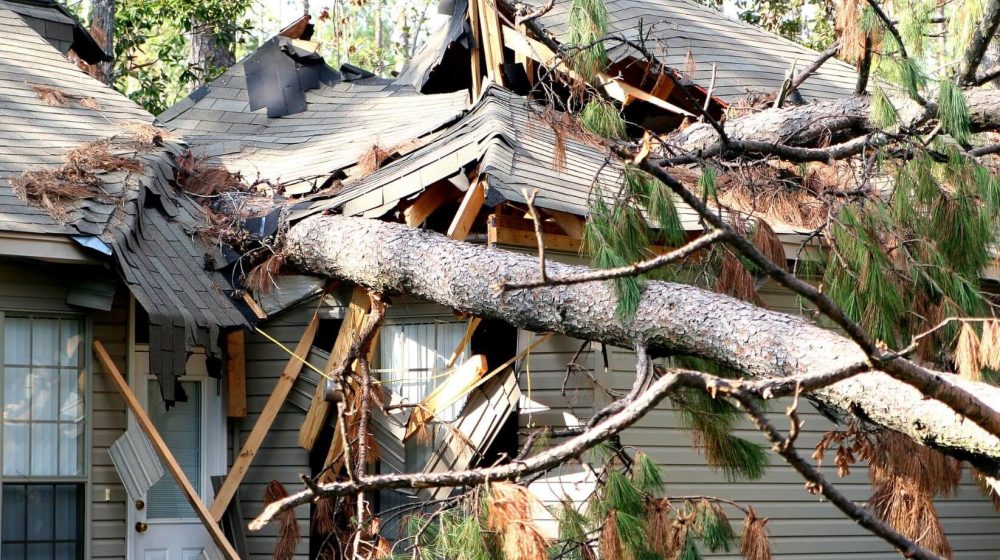
Are Your Trees Hurricane-Resistant?
With the NOAA’s prediction of an above-normal 2024 hurricane season, it’s critical to prepare your trees and mitigate storm damage. Proper tree care bolsters root systems and reduces risks of trees falling. Assess your trees after a storm to identify weaknesses and prevent pests and diseases.
It’s mid-July and officially hurricane season, which runs from June 1 to November 30. In late spring, the National Oceanic and Atmospheric Administration (NOAA) released their storm prediction for the 2024 storm season: “an 85% chance of an above-normal season” (noaa.gov), which includes a possible 8 to 13 hurricanes, with 4 to 7 of them forecasted to be category 3 or higher.
The forceful winds of a hurricane, 74 mph or higher, can cause serious destruction to your property, and your trees in particular. Branches may be bent and broken, trees might twist or break, and roots can be pulled out of the ground, toppling a tree entirely.
Trees with weakened root systems or those already stressed, dying, or impacted by pests and diseases are the most susceptible to being severely damaged by hurricane winds.
It is of the utmost importance to take good care of your trees to mitigate storm damage.
Identify Trees in Need
Not all trees need to be pruned, and hopefully, all of your trees are healthy. Still, it’s a good idea to call out a certified arborist to check your property and identify stressed, diseased, or pest-ridden trees; note the trees needing pruning; and create a plan of action to prepare your trees for hurricane season.
Tree Pruning
Pruning is an important maintenance task to ensure strong, healthy trees. If you’re a DIYer, get some expert guidance before you start chopping off branches. Often, it’s trees that have been improperly pruned that suffer the most damage in a hurricane.
Proper Pruning
The process of preventative tree care should be a year-round effort, not a task reserved for June. Most trees should be pruned during their dormant seasons in the winter and early spring.
Pruning a tree involves thinning the canopy, including selectively removing interior branches to allow the wind to blow through. Trees with more than one leader, or trunk, are more likely to split during a strong storm, as these upright branches are less secure than horizontal ones. An arborist may suggest removing double leaders to promote healthy growth and prevent splitting.
What Not to Do
When pruned incorrectly, trees are more likely to be damaged during storms, develop diseases or pest infestations, or decay. As a rule of thumb, no more than 25-30% of foliage should be removed per year.
Tree topping, also called hat-racking, describes a tree being over-pruned and having little to no leaves remaining on the branches. It can cause decay and rot, poorly secured new growth, and weakness. You should never top a tree; not only is it harmful to your tree but it’s also illegal!
It is crucial that roots are not harmed during the pruning process or other landscaping work. Damaged roots will weaken a tree’s stability and increase its susceptibility to disease.
The consequences of improper pruning can be severe, and all the more reason to hire a certified arborist to handle your large tree care.
Keep Your Trees Properly Hydrated
As with all landscape plants, your trees’ water needs depend on the season. Especially during the growing season, pay attention to rainfall and make sure your trees get a deep soak about once a week. Consistent and sufficient water will help trees develop robust root systems more likely to withstand a hurricane.
Tree Disease Prevention
Trees impacted by wind or water during a hurricane may suffer damage or stress and become more vulnerable to diseases and pests. When trees suffer from internal damage, broken roots, prolonged soil saturation, or salt spray, they may be weakened for years. These trees become susceptible to beetles, canker, root rot, and more.
Proper tree care throughout the year and a thorough assessment of your trees after a hurricane is critical not only for the health of your trees but ultimately to protect your property, home, and loved ones.